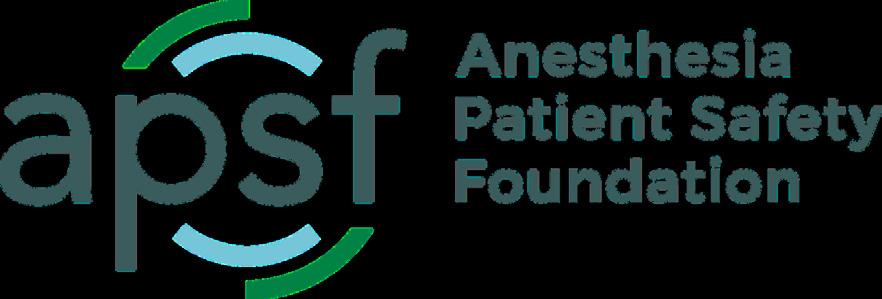Patient Safety
DR. PETER PRONOVOST
The physician and patient safety advocate discusses the great promise and even greater responsibility that comes with the rise of AI technology in healthcare
Read more on Page 06



The physician and patient safety advocate discusses the great promise and even greater responsibility that comes with the rise of AI technology in healthcare
Read more on Page 06



Every day in every hospital and health system across America, dedicated care teams strive to deliver safe, high-quality care to every patient, continually identifying what drives better health outcomes and then implementing changes to improve patient care. The data prove that hospitals have made meaningful progress in delivering safe, high-quality care. Despite being sicker with more complex medical conditions, hospitalized patients in the first quarter of 2024 were over 20% more likely to survive a life-threatening illness than they were in previous years, according to a report released by Vizient and the American Hospital Association. Between April 2023 and March
2024, an estimated 200,000 more hospitalized Americans survived conditions they wouldn’t have just five years ago. Those numbers represent real people — grandparents, siblings, children, neighbors, and friends who today have a second chance at life.
Not only have many other hospital measures of patient safety improved compared to pre-pandemic levels, but more patients are being screened for cancer than ever before. Preventative screenings for breast, colorectal, and cervical cancer have increased by as much as 80% over the last five years. This is critically important since cancer diagnoses among young people are rising, and earlier prevention
of cancer often means it is more treatable.
Hospitals are not resting on their laurels but are on a continuous journey to innovate and improve patient and staff experience. Here are a few examples among many happening every day in communities across the nation:
• MUSC Health in South Carolina embraces the use of telehealth to extend quality care to more patients, many in rural areas. By adopting a virtual-first strategy, physicians and specialty providers see patients within days instead of weeks, reducing care disparities and improving outcomes.
• Sanford Health in South Dakota fosters a culture of safety by making sure that all staff are empowered to ensure safety, regardless of whether they provide direct care to patients. Standardized training for every single employee equips staff with a shared language and commitment to improvement and progress every day.
• Valleywise Health in Arizona distributes free bicycle helmets at community and school events focusing on health and safety. Valleywise offers a proactive health measure aimed at preventing head injuries. In light of serious injuries from bicycle accidents, including a significant number of pediatric patients arriving in the emergency department, Valleywise educated children and their families about preventing injuries and riding safely.
Keeping patients safe, providing quality care, and improving health are at the heart of everything hospitals and health systems do. Improvement is a journey that will continue for years to come by building on successful healthcare programming that makes a real, impactful difference in the lives of patients.

Public safety isn’t a privilege — it’s a basic right. It matters everywhere — for the retail worker behind the counter, the doctor or nurse treating a patient, the fan at a football game, and the executive walking to work.
In the years following the COVID-19 pandemic, hospital staff have faced a troubling rise in violence, verbal abuse, and stress. Reports from the American Nurses Association and National Nurses United indicate that workplace violence against nurses has escalated at an alarming rate. These incidents can impact not only physical and mental well-being, but also the ability to deliver quality patient care.
Healthcare facilities have implemented a range of safety strategies, from panic buttons and de-escalation training to dedicated security personnel. These measures are vital, but emerging technologies now offer new ways to unify security operations — enabling faster and more effective responses to protect both staff and patients alike.
Safety for every shift
Axon’s physical security ecosystem for healthcare features integrated technology and hardware designed to create safer places of care. Axon Fusus serves as the central nervous system of a hospital’s security operations center (SOC), integrating existing tools and extending to advanced technologies for threat detection and mitigation. Previously separate solutions, systems and workflows are now unified — leveraging current infrastructure while preparing for future needs.
Body-worn cameras can proactively safeguard patients and staff, giving frontline workers a visible deterrent that also adds an extra layer of protection by capturing realtime interactions and supporting incident response. Axon Body Workforce, designed for healthcare environments, is compact and easily wearable on uniforms or lanyards, and integrates seamlessly into both clinical and security workflows.
Beyond providing evidence during incidents, body-worn cameras can also streamline reporting through digital evidence
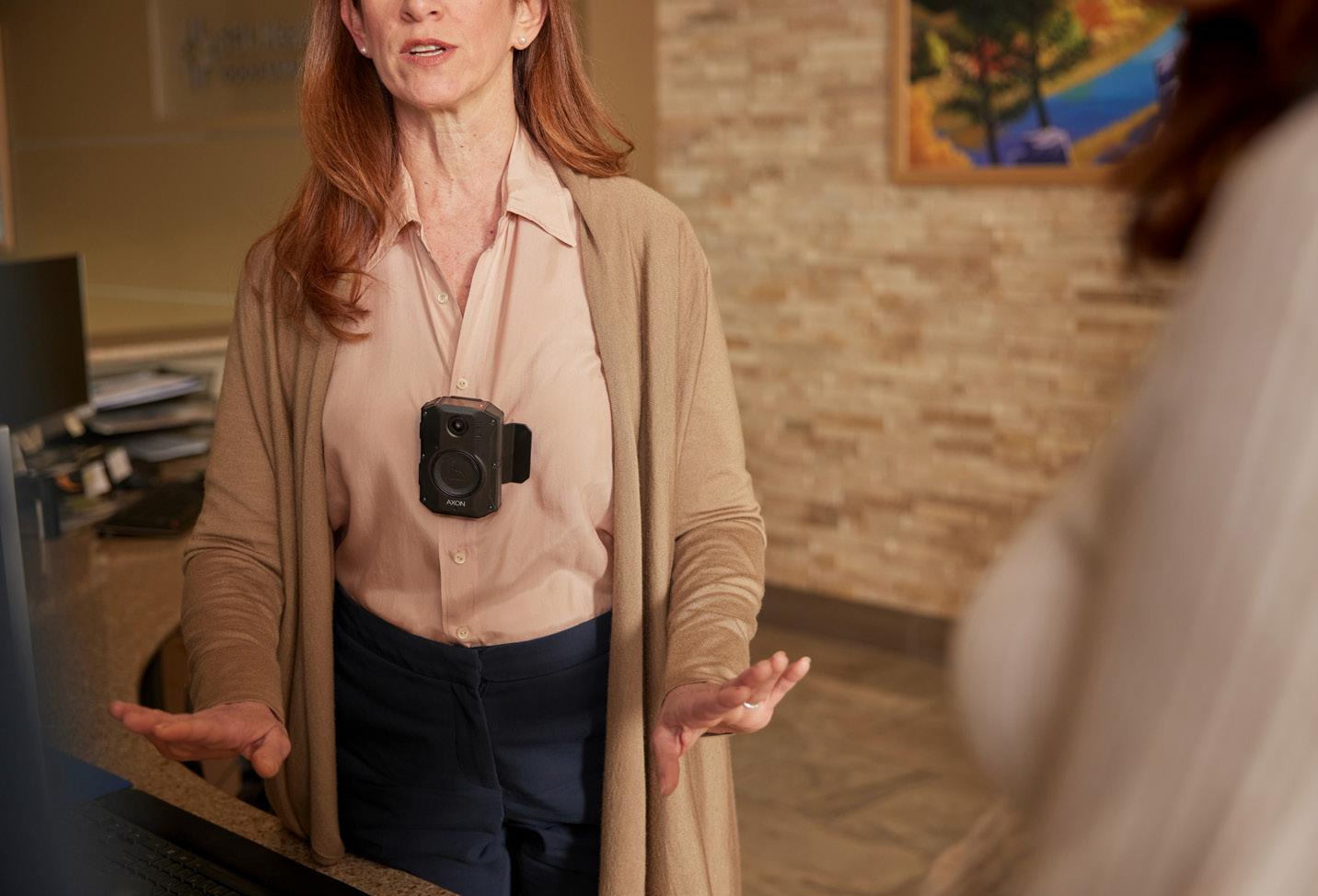
management, including collaboration with law enforcement when needed. This simplifies OSHA compliance and helps resolve disputes quickly, creating transparency for healthcare and security teams.
A study by the International Association for Healthcare Security and Safety Foundation found that for hospitals deploying body-worn cameras, 78.3% used footage to settle disputes. Additionally, 95.7% of hospital security staff surveyed said the technology was worth the investment, citing benefits for staff, patients, and visitors.
With these advances come strict protocols for camera usage — ensuring compliance with privacy laws and informed consent. Healthcare staff also benefit from clear usage policies, typically activating devices only during safety incidents to communicate with security or document interactions when necessary. Automated redaction tools in secure digital evidence systems help meet HIPAA standards — protecting privacy while maintaining safety.
A commitment to care and safety
Addressing workplace violence in healthcare requires both traditional safeguards and
modern technology. For more than three decades, Axon has led innovation in public safety — equipping customers with technology and training to help them protect life. As threats grow more complex, Axon’s mission remains clear: to provide organizations with the solutions they need to stay safe and protect others, whether in public spaces, workplaces, or healthcare facilities.
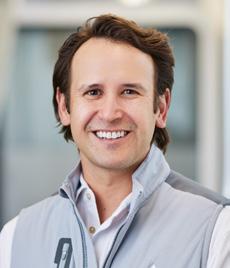

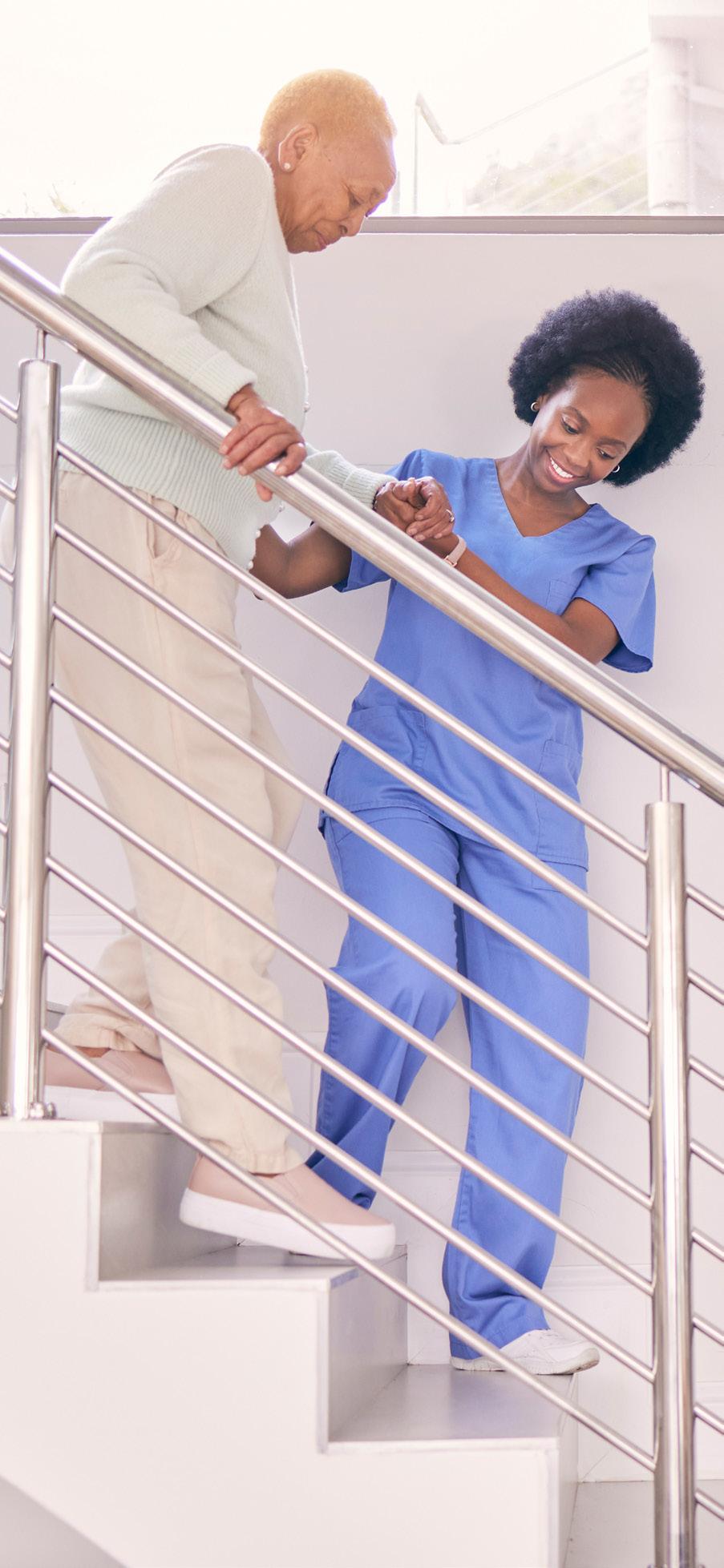
Each year, millions of people, including elderly nursing home residents, hospitalized adults, children, and new mothers, suffer injuries from falls in healthcare facilities and their homes.
Patient falls are the most common adverse events reported in hospitals, with 700,000 to 1 million patient falls occurring in U.S. hospitals annually. These falls result in approximately 250,000 injuries and up to 11,000 deaths, according to the National Institutes of Health. To address these alarming statistics, The Joint Commission created its Speak UpTM on Falls campaign, which aims to help Americans reduce their risk of falling. This campaign acknowledges the seriousness of falls. Statistics from the U.S. Centers for Disease Control and Prevention indicate that falls are the second leading cause of injury-related deaths for those aged 65 and older, and the most common cause of injuries and hospital admissions among the elderly.
Whether residing in a healthcare facility or moving around at home, it is crucial to take necessary precautions to minimize the risk of falling, as falls can lead to serious and even life-threatening injuries.

WRITTEN BY Elizabeth Mort, M.D. Vice President, Chief Medical Officer, The Joint Commission
Whether residing in a healthcare facility or moving around at home, it is crucial to take necessary precautions to minimize the risk of falling, as falls can lead to serious and even life-threatening injuries. The Speak Up™ campaign provides valuable tips and actions to help prevent and reduce falls.
Key recommendations to help prevent falls
• Manage personal healthcare: Engage in exercises to improve strength and balance, stay hydrated, schedule regular eye exams, and discuss with your doctor any medication side effects that might cause drowsiness or confusion.
• Take extra precautions: Simple actions such as turning on lights when entering a room, keeping walkways clear, using handrails on stairs, and wearing proper shoes can significantly reduce the risk of falls.
• Modify homes: Use motion sensors or timers for lights, place nightlights in bedrooms and bathrooms, remove throw rugs, and apply non-slip decals on stairs and in bathtubs. Home care agencies, personal care and support agencies, or community programs may assist older or disabled individuals in making these changes.
• Take precautions in hospitals or nursing homes: In healthcare facilities, patients should use call buttons for assistance, wear non-slip socks, and inform the nurse or doctor if medication causes dizziness or other side effects.
Speak Up™ posters on fall prevention are available on The Joint Commission’s website in an easy-to-read format. Additionally, the video “Speak Up To Prevent Falls” highlights various ways to reduce the risk of falling. Download the infographic and watch the video, available in both English and Spanish, today.

Patient safety sets the foundation for a safe, equitable, trustworthy care experience — regardless of whether you’re operating in a virtual health system or a physical one. And yet, despite increased scrutiny on online “pill mills” and bad actors, few virtual care companies are upfront about their approach to clinical quality and patient safety.
All healthcare providers will tell you they work hard to avoid errors of any kind. But when mistakes do happen, it’s important they become opportunities for learning and improvement. Building upon foundational elements of best-in-class brick-andmortar patient safety systems, telehealth programs should be optimized to address the types of errors that patients and providers could encounter in a virtual setting. To do this, you need to invest in a dedicated, multidisciplinary patient safety team.
At Teladoc Health, our industry-leading quality and patient safety programs have earned recognition from The National Committee for Quality Assurance and the Agency for Healthcare Research and Quality.
Our patient safety team is comprised of physicians, nurses, and a human-factors engineering
psychologist, with decades of combined experience from leading patient safety in brick-andmortar systems. This team spent years conceptualizing, building, and refining the customized event reporting system we use at Teladoc Health, and regularly shares our learnings at national and international conferences and other forums.
Our classification model captures potential events across categories such as: diagnosis, intervention, care management, medication, communication, and cybersecurity. This foundation is important because it allows us to quickly and proactively track, classify, and investigate potential safety events that are most likely to impact members, and incorporate learnings to prevent future errors.
If a physician or other provider is concerned that reporting an error could result in a

WRITTEN BY Dr. George R. Verghese, M.D., M.B.A. Chief Clinical Quality Officer, Teladoc Health
Having a multidisciplinary team of professionals skilled in safety science facilitates rigorous investigations that help us better identify all contributing factors to a problem, and design robust action plans to improve. By investing in a team of clinical leaders with decades of experience in this field, we’ve been able to build a program that can analyze potential safety events more quickly, address root causes, and catch errors before they even reach the patient.
cascade of disciplinary actions, they may be reluctant to report — which can lead to missed opportunities for improvement.
Given our understanding that clinicians may be reluctant to share and discuss problems and patient safety concerns, in 2019, we established the first virtual care Patient Safety Organization, The Institute of Patient Safety and Quality of Virtual Care. This federally recognized entity of Teladoc Health makes it possible for information from healthcare providers to receive certain legal protections in the spirit of safety and improvement, so that the root causes of emerging issues can be identified and addressed quickly.
Identifying the errors is a foundational element of any patient safety program, but it’s not enough. The hard part is turning that data into insights, and that’s where the team makes a powerful difference.
That spirit of continuous learning and improvement extends to other domains of clinical quality. Our team is continuously improving our rates of antibiotic and oral steroid use, preventative cancer screenings, control of chronic conditions like diabetes and hypertension, and patient-reported outcomes in common mental health disorders like depression and anxiety. We utilize rigorous improvement science frameworks to reduce unnecessary variation in care and enable data-driven, measurable improvement.
With additional pressures from payers and regulators, we’re seeing more focus on quality and safety programs — and I think it’s a shift we should welcome. Investing in patient safety and quality is not just the right thing to do, it’s what our patients and members deserve.
To learn more, visit
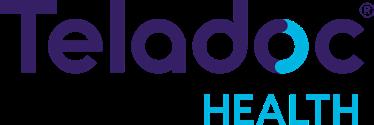
We have a responsibility to leverage the power of artificial intelligence (AI) to improve healthcare for all. It’s up to all of us to realize that potential.

By now, we’re all familiar with how ChatGPT can generate an answer to virtually any question, or how an “ambient listening” bot can create a detailed summary of a Zoom call. But what if the amazing ability of AI could be harnessed to do something far more consequential? Could it instead help create easier access to the healthcare we all want and need, as well as improve the quality of that care?
In fact, it’s already happening. AI and the can-do spirit of human agency are two powerful tools to help us achieve this goal. They have the potential to transform the healthcare we receive every day, making it more accessible, efficient, transparent, and patient-focused.
The promise of AI in healthcare AI can improve patient access and experience, scientific discovery, and patient outcomes. From a patient scheduling an appointment more efficiently to a provider analyzing “big
data” to identify disease patterns, predict patient outcomes, and prescribe personalized treatment, AI has the potential to enhance satisfaction for all of us as consumers of healthcare, while also helping providers in their decision-making processes.
AI also promises to reduce errors in diagnosing and treating conditions, which all of us want, offering caregivers crucial support. When tested, Reasoning AI performed with remarkable accuracy in making an accurate diagnosis and treatment plan. However, it is important to note that AI serves as a supportive tool, assisting physicians in making well-informed decisions and enhancing patient care. It can also allow providers to gauge the quality of the care they’re providing with metrics reported in real time — not years later. Those quality outcomes matter a great deal to both patients and the providers who treat them.
Balancing AI and agency However, while AI technology holds
great promise for improving healthcare, our attitudes and abilities must also play a crucial role in creating change. Agency in this context refers to the ability of patients and providers to take control of the healthcare journey. In practical terms, this means that we, as empowered patients, are actively managing our health data, enabling us to make informed choices about our care. For providers, agency means having the necessary tools and information to deliver high-quality care.
The future of healthcare lies in seamlessly integrating both AI and agency. It will require healthcare systems to invest in both infrastructure and people. It will also require a forward-looking attitude from all of us. At our institutions, for example, we’re promoting AI to all employees so they can understand the basics and seek to use it to better serve patients. The goal is a system that is more efficient, equitable, transparent, and patient-centered.


Every year, sepsis kills an estimated 11 million people worldwide – that’s nearly one in five deaths globally. In the United States alone, it claims approximately 350,000 lives annually, more than breast cancer, prostate cancer, and opioid overdose combined.
Despite its deadly toll, sepsis often flies under the radar. “It’s not a heart attack or a stroke,” said Ajay Shah, Ph.D, co-founder and CEO of Cytovale, a medical diagnostics company. “But it’s just as urgent – and potentially more deadly.”
Sepsis occurs when the body’s immune response to infection spirals out of control, attacking its own tissues and organs. It progresses rapidly, making early detection critical. But that’s also the biggest hurdle. “To paraphrase a famous quote,” Shah explained, “sepsis is very easy to treat when it’s hard to detect – and very hard to treat when it’s easy to detect.”
Now, a new blood test is helping to change that. By enabling faster, more accurate diagnosis in Emergency Departments (ED) across the country, this technology offers a crucial head start in the fight against one of medicine’s most elusive and deadly syndromes.
The challenge
The symptoms of sepsis are very common and broad, similar to a common cold or flu. Therefore, in the first minutes of an ED visit, it can be difficult and time-consuming to rapidly identify patients at high risk. And those delays matter: “The sepsis shock mortality increases by 8% per hour of delayed diagnosis,” Shah stressed, continuing, “and the common strategy of trying to treat everyone leads to a crushing demand on our nurses and physicians, rather than enabling them to focus efforts on the patients who’ll actually benefit from aggressive care”.
The difficulty in diagnosing sepsis also increases costs to both the individual and the healthcare provider in terms of extra days in a hospital and healthcare resources spent chasing down additional tests, imaging and treatments.
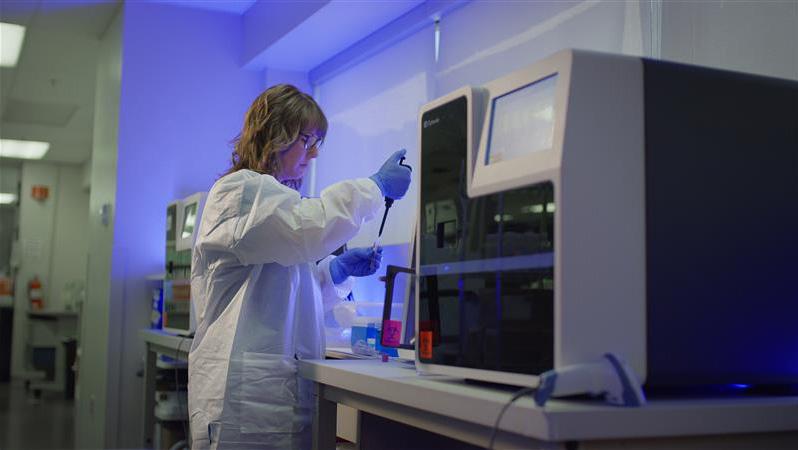
Enter IntelliSep — a revolutionary test that is changing the way sepsis is diagnosed in the ED.
IntelliSep is an AI-enabled biomechanical test. “The way IntelliSep works is – in 8 minutes – we physically squeeze about 50,000 individual white blood cells from a patient’s blood sample,” Shah explained. The system then relies on an AI trained algorithm to interpret video data and analyze the cells’ response. “The output from the Cytovale system gives the clinician a simple, clinically actionable score that we call the IntelliSep Index.”
That index is organized into three straightforward “bands” — Band 1 indicates a low probability (< 2%) of sepsis, Band 2 indicates that further investigation is needed, and Band 3 indicates a high probability of sepsis. “IntelliSep enables physicians to see sepsis early,” Shah explained.
IntelliSep has been used in the evaluation of more than 30,000 patients across five states, and its impact has been immediate. “One health system shared that by leveraging IntelliSep they’re able to reduce patients’ length of stay by nearly a day,” Shah noted. “And by detecting sepsis in a patient before they look visibly sick in the ED, they’re able to accelerate patients’ care by over an hour.”
This has given Cytovale’s health system partners the ability to reduce risk-adjusted
sepsis mortality by over 30%. “That’s a lot of people,” Shah said. “It translates to about a life saved each week in their hospital.”
As equally important and just as quickly, IntelliSep screens out patients who don’t have sepsis, freeing up limited resources and getting that patient the care they actually need. “Physicians can focus their energy on the patients who really need it most,” Shah pointed out. Shah is excited about the potential of IntelliSep to help more people. “We’re still very early in our journey,” he said. “What we’re focused on is increasing access to IntelliSep by partnering with forward-thinking health systems.”
Written by Jeff Somers




The United States is proud of its medical advances, yet it remains the most dangerous high-income nation in which to give birth.
In 2023, 669 women died from pregnancy-related causes — 18.6 deaths per 100,000 live births — more than double Canada’s rate and nearly ten times Norway’s. Black mothers were 3.5 times more likely to die than white mothers, a gap that widened last year. Behind every statistic is a devastated family and an avoidable loss.
Eighty percent of these deaths are preventable. Leading culprits include cardiovascular disease, preeclampsia, sepsis, and obstetric hemorrhage. Because most fatal events unfold after hospital discharge, solutions must span prenatal, hospital, and postpartum care. Yet patients still face barriers to insurance, transportation, and culturally competent care, and best-practice guidance is used unevenly by clinicians. Collaboration is our most powerful weapon. Researchers must probe how social stress, chronic illness, and bias intersect with pregnancy. Payers and policymakers must fund that science and guarantee every mother
access to the lifesaving care it reveals. Professional societies, community advocates, and families must insist that proven protocols become routine, not optional.
Collaboration in action
Bright spots show the way. The California Maternal Quality Care Collaborative combined evidence-based “toolkits” with hemorrhage carts, checklists, and rapid-response drills, cutting the state’s maternal death rate by 55% in just four years. Its free toolkits on hemorrhage, hypertension, sepsis, and cardiac disease are ready for hospitals nationwide to adopt today.
Nationally, the Alliance for Innovation on Maternal Health has distributed standardized patient-safety bundles to 49 states. Early adopters who implemented hemorrhage and hypertension bundles saw severe maternal morbidity fall 8-22%.
Expert anesthesia care is another pillar. The Society for Obstetric Anesthesia and Perinatology created its Center of Excellence (COE) designation to certify facilities with 24/7 anesthesia coverage, simulation training, evidence-based protocols, and ongoing outcome measurement. More than 60
hospitals now carry the COE seal, setting a national benchmark for high-reliability maternity care. In the spirit of fostering collaboration, the Anesthesia Patient Safety Foundation (APSF) will be hosting as their annual Stoelting Conference: “Transforming maternal care: Innovations and collaborations to reduce morbidity and mortality,” Sept. 3-4 in Chicago.
How do we bring these successes to every delivery room? Congress can sustain funding to boost maternal health research and support impactful collaboratives. States can require hospitals to adopt bundles, support rural obstetric units, and report outcomes transparently. Health systems can invest in simulation, early-warning scores, and culturally responsive care. Industry can focus on innovations in medications, monitors, and other life-saving devices that play a role in the perinatal period. Clinicians must listen to women’s voices and apply the best evidence without delay. America already knows how to save mothers’ lives. The task before us is to weave today’s bright spots into a nationwide fabric of safety — one that leaves no mother, baby, or family behind.

WRITTEN BY May C M PianSmith, M.D., M.S. Associate Professor of Anaesthesia, Harvard Medical School; Immediate Past President, Society for Obstetric Anesthesia & Perinatology (SOAP); Board of Directors, SOAP, APSF, and FAER


Patient safety is always your top priority — and ours. Our industry-leading airway management and patient monitoring technologies make it possible for clinicians to predict, respond to, and prevent potential adverse events — to help keep your patients safe wherever you are.1–5
This is why we are proud to support the Anesthesia Patient Safety Foundation (APSF) and their mission to improve the safety of patients during anesthesia care.
“APSF is proud of our 38-year partnership with Medtronic, working to help ensure that no one is harmed by anesthesia care,” said Daniel J. Cole, MD, President of APSF. “Our shared commitment to improve patient safety during anesthesia care is as relevant today as it was 38 years ago.”

“Our long-standing partnership with APSF is grounded in our commitment to patient safety,” said Brian Blomerth, interim president of the Acute Care & Monitoring operating unit at Medtronic. “We empower healthcare professionals with world-class technology to personalize patient care, anytime, anywhere.”
Our acute care and monitoring solutions address unmet clinical needs, reduce the cost of care,6-9 and streamline workflows,10-12 all while keeping the patient at the center of everything we do.

Our product portfolio includes, but is not limited to, BIS™, HealthCast™, INVOS™, Microstream™, Nellcor™ and Shiley™.














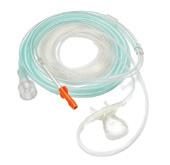

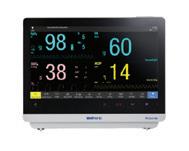
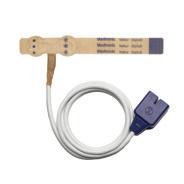
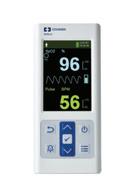

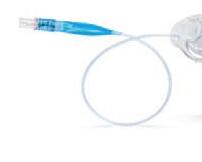
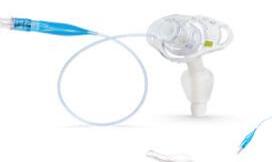
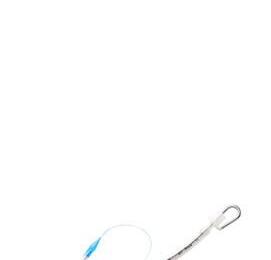
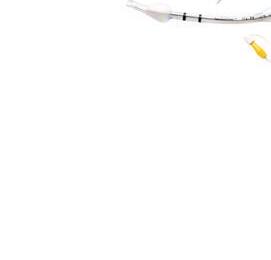





1. Leenen JPL, Ardesch V, Patijn G. Remote home monitoring of continuous vital sign measurements by wearables in patients discharged after colorectal surgery: Observational feasibility study. JMIR Perioper Med. 2023 May 5;6:e45113.
2. Lee L, Caplan R, Stephens L, et al. Postoperative opioid-induced respiratory depression: a closed claims analysis. Anesthesiology. 2015;122:659–665.
3. Zhang J, Jiang W, Urdaneta F. Economic analysis of the use of video laryngoscopy versus direct laryngoscopy in the surgical setting. J Comp Eff Res. 2021;10(10):831– 844.
4. Fawzy A, Wu TD, Wang K, Robinson ML, Farha J, Bradke A, Golden SH, Xu Y, Garibaldi BT. Racial and ethnic discrepancy in pulse oximetry and delayed identification of treatment eligibility among patients with COVID-19. JAMA Intern Med. 2022;1;182(7):730–738.
5. Pérez-Otal B, Aragón-Benedí C, Pascual-Bellosta A, Ortega-Lucea S, Martínez-Ubieto J, Ramírez-Rodríguez JM; Neuromonitoring depth of anesthesia and its association with postoperative delirium. Sci Rep. 2022;12(1).
6. Beard JW, Sethi A, Jiao W, Hyatt HW, Yapici HO, Erslon M, Overdyk FJ. Cost savings through continuous vital sign monitoring in the medical surgical unit. J Med Econ. 2023;26(1):760–768.
7. Thaler A, Mohamod D, Toron A, Torjman MC. Cost comparison of 2 video laryngoscopes in a large academic center. J of Clin Outcomes Management. 2021 July;28(4):174-179.
8. Lewis SR, Pritchard MW, Fawcett LJ, Punjasawadwong Y. Bispectral index for improving intraoperative awareness and early postoperative recovery in adults. Cochrane Database Syst Rev 2019 Sep 26;9(9):CD003843.
9. Hendrich A, Chow MP, Skierczynski BA, Lu Z. A 36 hospital time and motion study: How do medical surgical nurses spend their time? Perm J. 2008;12(3):25–34.
10. Khanna AK, Bergese SD, Jungquist CR, et al. Prediction of opioid-induced respiratory depression on inpatient wards using continuous capnography and oximetry: an international prospective, observational trial. Anesth Analg. 2020;131(4):1012–1024.
11. Areia C, King E, Ede J, Young L, Tarassenko L, Watkinson P, Vollam S. Experiences of current vital signs monitoring practices and views of wearable monitoring: a qualitative study in patients and nurses. J Adv Nurs. 2022;78(3):810–822.
12. Becking-Verhaar FL, Verweij RPH, de Vries M, Vermeulen H, van Goor H, Huisman-de Waal GJ. Continuous vital signs monitoring with a wireless device on a general ward: a survey to explore nurses’ experiences in a post-implementation period. Int J Environ Res Public Health. 2023;20(10):5794.

When placing trust in nurses, doctors, and other providers, patients should be confident that their care team has all the resources needed to offer highquality, compassionate care.
Today, healthcare providers face incredible strains that can cause detrimental effects on their own health and well-being. High workloads, administrative burdens, and poorly designed technologies too often divert clinicians’ time away from caring for patients. Over 60% of healthcare professionals report experiencing symptoms of burnout, such as extreme anxiety, stress, depression, and emotional exhaustion. Burnout can have heartbreaking consequences, including clinician suicide and errors that can lead to poor patient outcomes, including preventable deaths.
High-stress work environments contribute to staffing challenges that reduce patients’ access to care. Burnout drives many health workers to leave the practice, including 20% of physicians, 40% of nurses, and more than 30% of public health workers. Challenges in the U.S. health system take a heavy toll on patient care: 1 in 3 patients report being dissatisfied with the care they receive.
Change is possible. By taking action to support health worker well-being, we can reduce clinician burnout, safeguard patients, and improve the healthcare experience for everyone. Let’s support our health workers so they can focus on caring for us.
Written by The National Academy of Medicine Action Collaborative on Clinician Well-Being and Resilience
Our panel of experts shares actionable strategies healthcare professionals can adopt to drive safety, value, and long-term transformation.

INTERVIEW WITH Peter Pronovost, M.D., Ph.D., FCCM Chief Quality and Clinical Transformation Officer, University Hospitals; President, UH Veale Healthcare Transformation Institute
What best practices can healthcare personnel begin to implement today to support continuous improvement in the healthcare industry?
Peter Pronovost: They need to transform. Here are three practices that each individually improve organizations; together, they transform.
• Believe. Ensure every employee sees it as their job to improve value. Respect them, recognize them, and unleash and inspire them, rather than command and control them.
• Belong to a learning community. Ensure every role and site of care that is involved in a process has a voice in improving it. Ensure a culture and structure to allow the free flow of ideas, regardless of pedigree.
• Build a management and shared accountability system. If you can show a run chart with a slope for a measure that matters, you have a management system. If you stratify that run chart by hospital, unit, clinic, and clinician, and celebrate and learn from the strong performers and support the strugglers, you have a shared accountability system.
Karen Wolk Feinstein: The list of credible improvements and verifiable best practices that would make healthcare safer today is voluminous. The question is: Why is progress so slow? Safety in healthcare lags behind other complex, high-risk industries because we have no single entity that is created solely to

INTERVIEW WITH Karen Wolk Feinstein, Ph.D. President and CEO, Jewish Healthcare Foundation and Pittsburgh Regional Health Initiative
review, test, and certify best practices, and then present recommendations to accreditors and regulators. For decades, safety advocates have called for a National Patient Safety Board. Imagine aviation, mining, and construction with no agency responsible for advancing safety.
What technological application do you see making the greatest impact on improving patient outcomes?
PP: First, we need to integrate various types of data into a platform, such as EMR, Cost, ERP, call response, and infusion pump. Then, we need to use AI to support a management system to get to zero harm. Such a management system would include three things: (1) What is the defect in value? (2) What is the next best action? and (3) Was that action performed within the desired specification, and if not, what is the escalation?
KWF: I see the greatest impact coming from advanced care navigation systems that use AI to help patients with timely interventions, accurate medication reconciliation, and smarter referrals. These navigation systems should build a more responsive healthcare service network. With the support of AI/ML technologies, primary care providers can incorporate considerations from real-time data, demographic variables, available resources, environmental factors, and personalized predictions to act more accurately and effectively.
Emergency nurses — critical healthcare workers — are disproportionately impacted by violence on the job.
A2024 survey of Emergency Nurses Association (ENA) members revealed more than half of respondents had been physically assaulted, verbally assaulted, or threatened with violence in the previous 30 days. Healthcare workers account for about 10% of the U.S. workforce, yet they represent approximately 48% of missed workdays due to violence.
At a time when more nurses, not fewer, are needed, nearly 10% of ENA survey respondents said they were considering leaving nursing altogether because of workplace violence.
Simply put, the shadow of violence in emergency departments (EDs) looms over the ability of ED nurses and their peers to

deliver the best care possible when patients need it most. Whether a nurse leaves their shift early or the profession entirely because of violence, the impact on patient care is real.
Patients and their families must understand that incivility and disrespect toward emergency nurses and other care providers
interferes with treatment, and they will be held accountable for their actions.
Nurses need to know their employers have their backs by implementing zero-tolerance policies, safety-focused workplaces, additional education and training in the care of potentially violent patients, and best practices for
Sponsored
At a time when cost cutting and staffing shortages dominate our headlines, when our concerns about quality and safety in healthcare rise, emerging technology offers a bright spot.
The new documentary “The Pitch: Patient Safety’s Next Generation” explores the evolving role of technology in improving patient safety.
Through expert interviews, real-world technology solutions, and one young innovator’s journey at the frontier of innovation, “The Pitch” showcases the immense effort required to advance healthcare safety discovery. Directed by the creator of “To Err Is Human: A Patient Safety Documentary” (2018) and produced by the Jewish Healthcare Foundation, the film offers examples of the power of AI, robotics, advanced analytics, virtual reality, and machine learning to transform patient care.
“We set out to showcase the most creative innovations using technology for healthcare safety,” said director Mike Eisenberg. “We were blown away with what we found.”
Written by The Jewish Healthcare Foundation
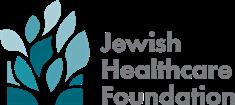
supporting staff after incidents, including assistance pressing charges against offenders.
The emergency department exists to care for the sick and injured, but the pervasive threat of violence has emergency nurses and their peers fearful. Incivility and violence are not “part of the job” in any workplace, let alone one of critical importance to the health of the community. The time for change is now, before more lives are impacted by preventable violence.
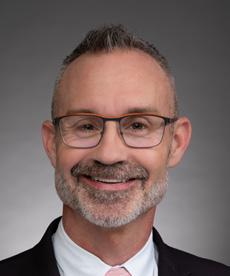
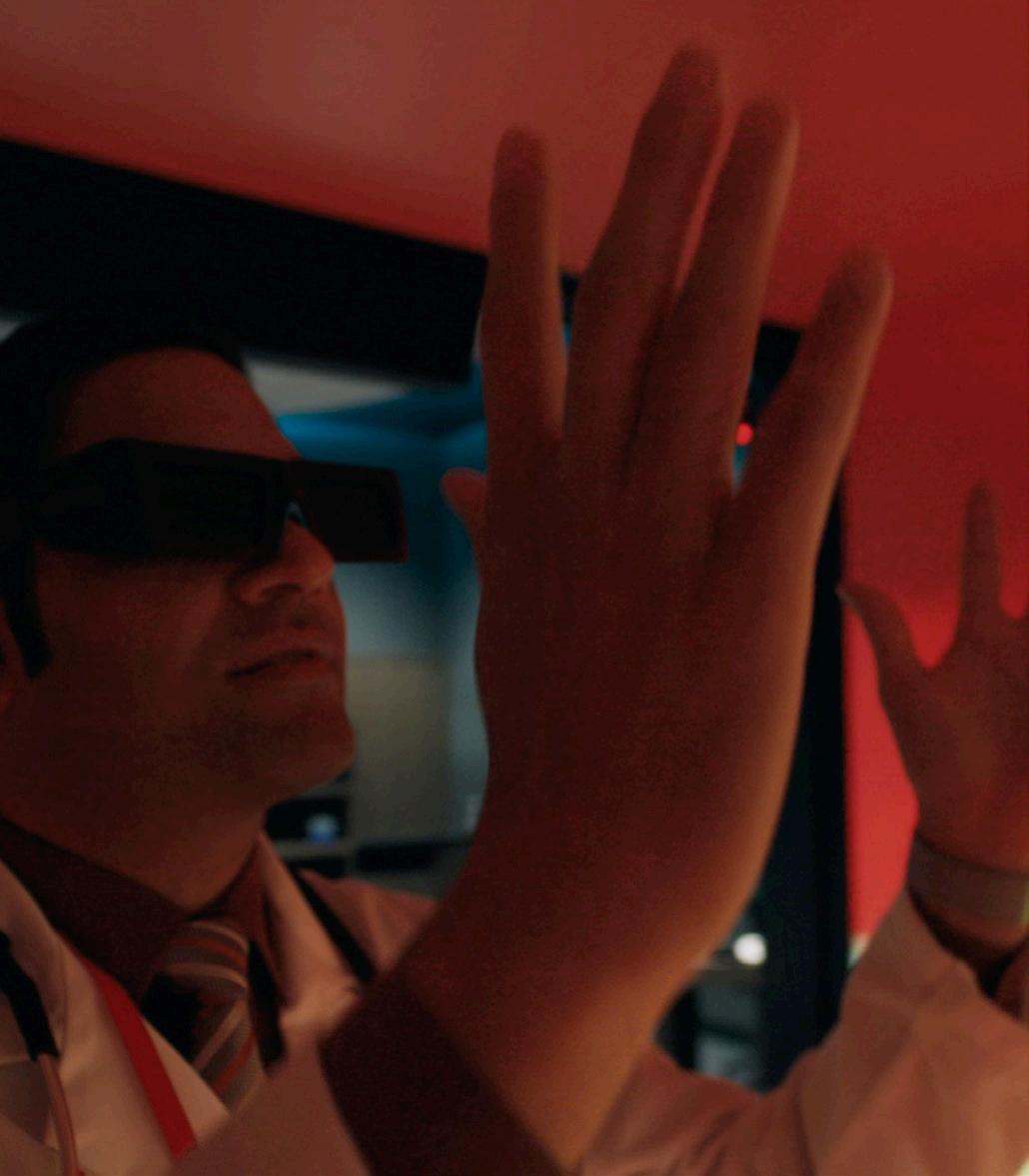




“It’s a must-see for anyone vested in what tomorrow’s medicine might look like...” -Overly Honest Reviews
PATIENT SAFETY’S NEXT GENERATION



